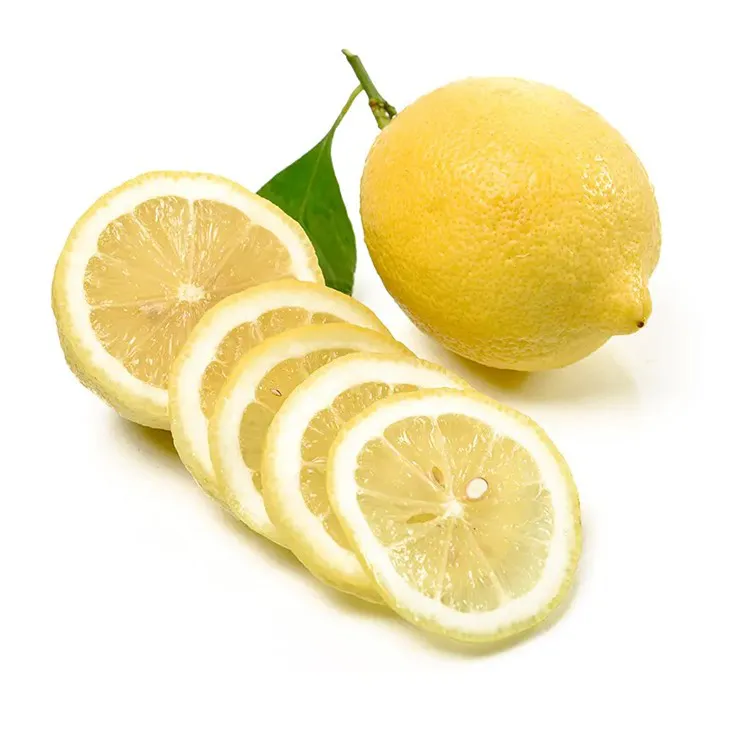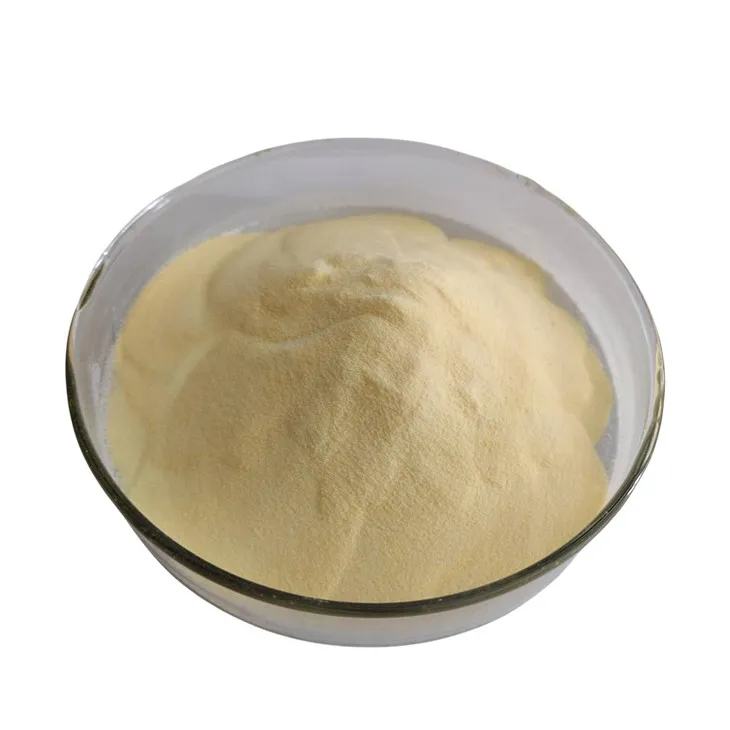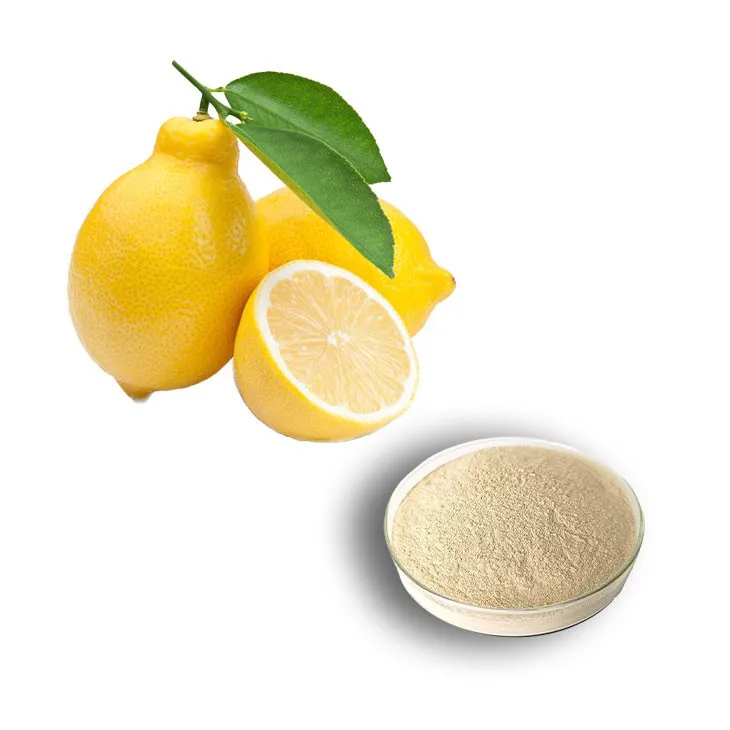- 0086-571-85302990
- sales@greenskybio.com
The process of extracting citral from lemon extract.
2024-11-28

1. Introduction
Lemon, a common and widely - used fruit, contains various valuable compounds, among which citral is of particular importance. Citral has a distinct lemony fragrance and is widely used in the food, perfume, and pharmaceutical industries. Extracting citral from Lemon Extract is not only a scientific exploration but also an economically significant process. This article aims to comprehensively discuss the process of extracting citral from Lemon Extract, including different extraction methods, the role of modern technology, and related environmental and economic aspects.

2. Traditional Extraction Methods
2.1 Steam Distillation
Steam distillation is one of the traditional methods for extracting citral from Lemon Extract. The principle behind this method is based on the fact that citral has a certain vapor pressure. The process involves the following steps:
- First, the lemon extract is placed in a distillation apparatus. The extract can be obtained by crushing fresh lemons and then using a suitable solvent to dissolve the relevant components.
- Steam is then introduced into the apparatus. The steam passes through the lemon extract, causing the citral molecules to vaporize along with the steam due to their relatively high vapor pressure.
- The vapor mixture of steam and citral is then condensed. As the vapor cools down, it turns back into a liquid state. The resulting liquid contains water and citral.
- Finally, the citral is separated from the water. This can be achieved through methods such as liquid - liquid extraction, taking advantage of the different solubilities of citral in different solvents.
However, steam distillation also has some limitations. For example, it may require a relatively long extraction time, and the extraction efficiency may not be very high. Some of the citral may be degraded during the high - temperature distillation process, affecting the quality and yield of the final product.
2.2 Solvent Extraction
Solvent extraction is another commonly used traditional method. Here are the main steps:
- A suitable solvent is selected. Commonly used solvents include hexane, ethyl acetate, etc. The choice of solvent depends on the solubility of citral and other factors.
- The lemon extract is mixed with the solvent. This is usually done in a stirred vessel to ensure good mixing and contact between the extract and the solvent.
- The mixture is allowed to stand for a period of time to allow the citral to dissolve in the solvent as much as possible.
- After that, the solvent containing citral is separated from the remaining solid or liquid components of the lemon extract. This can be achieved through filtration or centrifugation.
- Finally, the citral is recovered from the solvent. This can be done by evaporation of the solvent under appropriate conditions, leaving behind the relatively pure citral.
Although solvent extraction can achieve a relatively high extraction rate in some cases, it also has some drawbacks. The use of solvents may pose environmental risks if not properly managed. Some solvents are volatile and flammable, which requires strict safety measures during the extraction process. Additionally, the residues of solvents in the final citral product may also affect its quality and application in some industries.

3. Modern Technology in Citral Extraction: Supercritical Fluid Extraction
Supercritical fluid extraction (SFE) has emerged as a modern and advanced technology for extracting citral from lemon extract. Supercritical fluids possess unique properties that make them excellent candidates for extraction.
3.1 Principles of Supercritical Fluid Extraction
A supercritical fluid is a substance that is at a temperature and pressure above its critical point. For example, carbon dioxide is a commonly used supercritical fluid in extraction processes. When carbon dioxide is in its supercritical state, it has properties intermediate between a gas and a liquid. It has a high diffusivity like a gas, which allows it to penetrate into the lemon extract quickly, and at the same time, it has a certain solvating power like a liquid, which can dissolve citral effectively.
3.2 The Process of Supercritical Fluid Extraction of Citral
- The lemon extract is placed in an extraction vessel. The extraction vessel is designed to withstand the high pressure required for supercritical fluid extraction.
- Supercritical carbon dioxide is then introduced into the vessel. The pressure and temperature are carefully controlled to maintain the supercritical state of carbon dioxide.
- The supercritical carbon dioxide flows through the lemon extract, dissolving the citral. Due to its high diffusivity, it can extract citral from different parts of the extract more efficiently compared to traditional methods.
- The mixture of supercritical carbon dioxide and citral is then transferred to a separation vessel. By changing the pressure or temperature in the separation vessel, the solubility of citral in carbon dioxide is reduced, causing the citral to precipitate out.
- The separated citral is then collected, and the carbon dioxide can be recycled back to the extraction process. This not only reduces the cost but also has environmental benefits as it minimizes the release of carbon dioxide into the atmosphere.
Supercritical fluid extraction has several advantages over traditional methods. It can achieve a higher extraction yield, and the quality of the extracted citral is often better because the extraction process is carried out at relatively low temperatures, reducing the risk of citral degradation. Moreover, it is a more environmentally friendly method as it uses less toxic solvents (in the case of carbon dioxide) and has a reduced environmental impact.

4. Environmental Aspects of Citral Extraction
The extraction of citral from lemon extract has certain environmental implications that need to be considered.
4.1 Impact of Traditional Methods on the Environment
- As mentioned earlier, traditional solvent extraction methods may use solvents that are volatile and potentially harmful to the environment. If these solvents are not properly disposed of, they can contaminate soil, water, and air. For example, hexane is a volatile organic compound (VOC), and its release into the atmosphere can contribute to air pollution and the formation of smog.
- Steam distillation, although not using toxic solvents, consumes a significant amount of energy. The high - temperature steam generation requires a large amount of fuel, which in turn leads to carbon dioxide emissions and other environmental impacts associated with energy production.
4.2 Environmental Benefits of Modern Technology
- Supercritical fluid extraction, especially when using carbon dioxide, has relatively low environmental impacts. Carbon dioxide is a non - toxic and relatively abundant gas. Since it can be recycled in the extraction process, the net release of carbon dioxide is minimized.
- Moreover, modern extraction technologies often have better energy efficiency compared to traditional methods. For example, supercritical fluid extraction can be carried out at lower temperatures and pressures in some cases, reducing the energy consumption required for the extraction process.

5. Economic Aspects of Citral Extraction
The economic aspects of citral extraction are also crucial factors to consider.
5.1 Cost - effectiveness of Traditional Methods
- Traditional methods such as steam distillation and solvent extraction may have relatively low initial investment costs in some cases. For small - scale operations, simple distillation or solvent extraction equipment can be relatively inexpensive.
- However, in the long run, the costs associated with these methods may increase. For example, the cost of solvents in solvent extraction needs to be considered, and the relatively low extraction efficiency of steam distillation may lead to higher costs per unit of citral produced.
5.2 Economic Advantages of Modern Technology
- Although supercritical fluid extraction may require a relatively high initial investment for the specialized equipment, it can offer significant economic benefits in the long term. The higher extraction yield means that more citral can be obtained from the same amount of lemon extract, increasing the overall productivity.
- The quality of the citral obtained by supercritical fluid extraction is often higher, which can command a higher price in the market. Additionally, the environmental benefits of this method can also lead to potential cost savings in terms of environmental compliance and reduced waste management costs.
6. Conclusion
The process of extracting citral from lemon extract has evolved over time. Traditional methods such as steam distillation and solvent extraction have their own characteristics, but they also face some limitations in terms of extraction efficiency, quality of the product, and environmental and economic impacts. Modern technology, especially supercritical fluid extraction, offers a more efficient, environmentally friendly, and economically viable alternative. As the demand for citral in various industries continues to grow, it is important to further develop and optimize the extraction process to ensure sustainable production and utilization of this valuable compound.
FAQ:
What are the traditional methods for extracting citral from lemon extract?
Traditional methods for extracting citral from lemon extract may include steam distillation. In steam distillation, steam is passed through the lemon extract. The heat causes the volatile compounds, including citral, to vaporize. Then, through condensation, the vapor is converted back into liquid, and citral can be separated from other components to some extent. Another traditional method could be solvent extraction, where a suitable solvent is used to dissolve citral out of the lemon extract, and then further purification steps are carried out to obtain pure citral.
How does supercritical fluid extraction enhance the yield of citral extraction?
Supercritical fluid extraction enhances the yield of citral extraction in several ways. Supercritical fluids, such as supercritical CO₂, have properties between those of a gas and a liquid. They can penetrate into the lemon extract more effectively than normal solvents. The solvating power of supercritical fluids can be adjusted by changing the pressure and temperature. This allows for a more selective extraction of citral. Also, supercritical fluid extraction is often faster and can extract citral without causing significant degradation or alteration of its chemical structure, thus increasing the overall yield.
What are the environmental benefits of the modern extraction methods for citral from lemon extract?
Modern extraction methods, like supercritical fluid extraction, have several environmental benefits. For example, supercritical CO₂ is a relatively green solvent. It is non - toxic, non - flammable, and does not produce harmful waste products like some traditional organic solvents. It also has a relatively low energy consumption compared to some other extraction processes. Additionally, modern methods can often be more precisely controlled, reducing the amount of waste and by - products, which is beneficial for the environment.
What are the economic factors to consider in the extraction of citral from lemon extract?
There are several economic factors to consider. The cost of raw materials, which includes the cost of lemon extracts, is an important factor. The cost of the extraction equipment, especially for modern methods such as supercritical fluid extraction equipment which can be expensive, needs to be taken into account. The energy consumption of the extraction process also affects the economics. Higher - yielding methods may be more cost - effective in the long run, as they can produce more citral per unit of input. Also, the market price of citral and the potential for value - added products derived from citral extraction play a role in determining the economic viability of the extraction process.
What are the challenges in purifying citral after extraction from lemon extract?
After extraction, purifying citral can be challenging. One challenge is separating citral from other similar - structured compounds present in the lemon extract. These compounds may have similar chemical and physical properties, making separation difficult. Another challenge is removing any residual solvents or impurities introduced during the extraction process. Maintaining the purity of citral during purification steps, especially when dealing with relatively small amounts of citral in a complex mixture, is also a significant hurdle. Additionally, the purification process should be cost - effective and not cause significant losses of citral.
Related literature
- Advances in Citral Extraction from Lemon Extracts: A Review"
- "The Role of Modern Technology in Citral Extraction from Lemon"
- "Environmental and Economic Considerations in Citral Extraction from Lemon Sources"
- ▶ Hesperidin
- ▶ citrus bioflavonoids
- ▶ plant extract
- ▶ lycopene
- ▶ Diosmin
- ▶ Grape seed extract
- ▶ Sea buckthorn Juice Powder
- ▶ Beetroot powder
- ▶ Hops Extract
- ▶ Artichoke Extract
- ▶ Reishi mushroom extract
- ▶ Astaxanthin
- ▶ Green Tea Extract
- ▶ Curcumin Extract
- ▶ Horse Chestnut Extract
- ▶ Other Problems
- ▶ Boswellia Serrata Extract
- ▶ Resveratrol Extract
- ▶ Marigold Extract
- ▶ Grape Leaf Extract
- ▶ blog3
- ▶ blog4
-
Chinese Oyster Peptide Manufacturers.
2024-11-28
-
The best organic Agaricus blazei extract.
2024-11-28
-
The best organic sugarcane extract.
2024-11-28
-
The best organic cocoa extract.
2024-11-28
-
Kupilu Extract
2024-11-28
-
Hawthorn powder
2024-11-28
-
Phellodendron Extract
2024-11-28
-
Diosmin
2024-11-28
-
Bayberry Extract
2024-11-28
-
White Peony Extract
2024-11-28
-
Marigold Extract
2024-11-28
-
Artichoke Extract
2024-11-28
-
Bitter Melon Extract
2024-11-28
-
Dan Shen Root Extract/Salvia Root Extract
2024-11-28





















